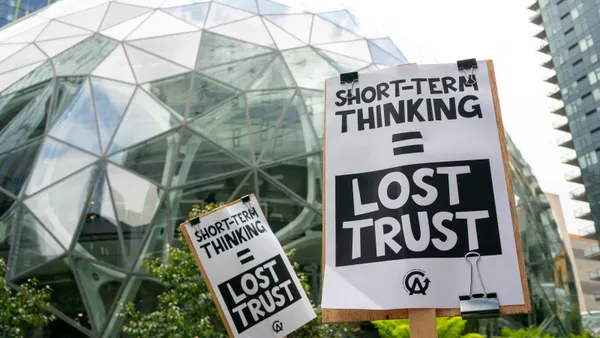Dive Brief:
- When gender references are removed from scientific research applications, female principal investigators were selected at a higher rate than their male counterparts, a study published last month revealed.
- The study authors examined the application review process used by the Hubble Space Telescope Time Allocation Committee. Initially, female applicants were selected for research time about 19% of the time, even though they represented nearly 23% of the applications. In 2018, all personally identifying information was removed from the applications. Prior to that, male applicants outperformed women by about 5%. After the switch, however, women outperformed men by 1%.
- Organizations should anonymize their recruiting procedures when possible, the authors wrote in a Harvard Business Review article about their research. "When you have evidence that gender, race, age, or other differences are affecting your selection process, despite their not being relevant selection criteria, you have error in your process," they said.
Dive Insight:
While intentional bias and discrimination remain too common in U.S. workplaces, recruitment bias can occur unintentionally.
AI-enabled applicant tracking systems and machine learning may have the potential to help reduce the impact of human foibles in the recruiting process, but misused, the tech can actually exacerbate it. What's more, candidates say they distrust AI-based tech in the recruiting process.
Training can help make workers aware of their own unconscious biases. In one recent study, for example, while nearly all of the respondents said they would recommend a deaf individual for a job, only 30% said they believed "absolutely" a deaf person could perform their own job equally well or better.
Workplaces that focus on diversity and inclusion are able make the workplace better for all employees. Work flexibility for new dads, for example, has been shown to benefit moms and dads alike — while inflexibility can drive women out of the workforce entirely.
Successful workplace inclusion initiatives require a firm top-down commitment, a culture of honest and open communication, and a plan that is embedded in the operational framework, experts say.
HR pros also need to watch out for, and remedy, inadvertent gaps — such as employment forms that don't account for gender-nonconforming applicants and employees. Workplaces that see employees as individuals, rather than categories, can achieve great success in this area.










